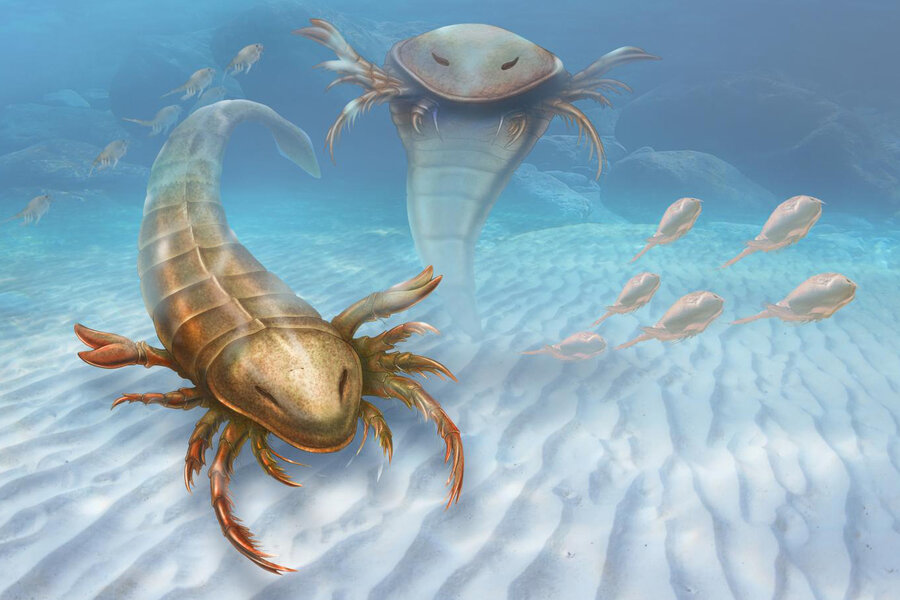A man-sized sea scorpion once roamed ancient ocean ... of Iowa?
Despite recent reports of shark attacks, new fossils reveal the oceans are still much safer than they were 460 million years ago.
Before Tyrannosaurus rex, the Earth’s dominant predator was a sea scorpion, according to scientists. It would have reached a length of 5 feet 7 inches and had a spiked tail and claws sprouting from its head.
Despite the horror movie type description, real fossils of the creature were discovered in Iowa by a team of geologists from the Iowa Geological Survey. Some 150 pieces of fossils were found below the Upper Iowa River. The fossils were sent to Yale University, where researchers verified the discovery and determined the species lived 460 million years ago. The researchers published their findings Monday in the journal BMC Evolutionary Biology.
The ancient sea scorpion was discovered in a meteorite impact crater left by the Ordovician meteor event over 470 million years ago, according to LiveScience. At the time the Pentecopterus decorahensis, the water creature’s new official name, roamed, an ocean covered Iowa.
The creature would have swum in the ocean, using its tail not to sting, but for balance and direction. The size of the creature was significant, rivaling the size of a grown man.
According to LiveScience, the limbs of the creature were individually specialized. The rear limbs were shaped like paddles and would have been used to swim or dig. The second and third pairs were angled and used to grab prey. The creature is closely related to arachnids and horseshoe crabs.
While there were likely larger sea scorpions in different areas of the world at the same time that Pentecopterus decorahensis lived, those would have been bottom feeders. The Iowa variety was a predator.
“This is the first real big predator," James Lamsdell, a postdoctoral researcher at Yale University and the lead author of the study published on the creature, told the Associated Press. "I wouldn’t have wanted to be swimming with it.”
This report includes material from the Associated Press.





